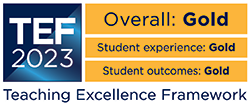Shedding light on 3D models
Background
For fragile objects, such as ancient pottery and forensic evidence, 3D modelling can be a valuable method of documentation, avoiding possible damage that can occur when examining objects using human touch. In the last decade, non-intrusive 3D imaging techniques have grown in popularity across a number of disciplines as devices have become less expensive, more portable and easier to use.
In 2012, Professor Tim Thompson, Dr David Errickson, Dr Gillian Taylor, Dr Amber Collings and Dr Rhys Williams at Teesside University began research into the development of a unique method of scanning and securing information about objects, shedding light on the potential of 3D models.

The Research
Despite the growing popularity of 3D modelling – particularly laser-based approaches – there was no existing research around the use of alternative structured light systems (SLS). The team at Teesside have developed a ground-breaking surface scanning method which uses structured light to pick up over 19,000 ‘points’ on an object per second. The result is an interactive 3D model that visualises an object with great accuracy. It is a method that can be used on everything from fragile archaeological artefacts to grime-encrusted engineering parts, and even vital forensic evidence.
The research team developed the very first international guidelines for SLS use across disciplines such as forensics, archaeology and heritage, as well as wider best practice for 3D documentation and the implementation of 3D modelling.
Building on these foundations, additional research conducted by PhD students at Teesside University showed that SLS is more accurate than standard photography, that the results can be interpreted in legal contexts, and that it is safe for use on living people. The approach has since been expanded even further for use on increasingly larger objects, including human remains, the metatarsus of elephant birds and the original locomotive engine.
The Impact
The team’s research into SLS has directly led to the creation of new standards and methodological techniques for interpreting archaeological and forensic artefacts, while enhancing public engagement with archaeology.
Organisations such as the Archaeology Data Service and the British Association for Biological Anthropology and Osteoarchaeology have incorporated the research and guidelines into recommendation documents on SLS practices. These are now being used by academics, field archaeologists and commercial archaeology companies across the world.
The team has also worked with heritage partners to apply best practice 3D modelling techniques, enabling museums to facilitate greater interactivity with the public. The Head of Steam Museum in Darlington used SLS to create 3D models of Stephenson’s original locomotive engine, and the Vindolanda Trust explored how Roman soldiers trained for combat through an interactive digital exhibition.
The research of Prof Thompson and his group at Teesside University formed a crucial part of the foundations of this document. His work to develop technical standards combined with his discussion of the ethical and legal impacts of 3D imaging served as core for our professional Guidelines… foster[ing] discussion and providing guidance for conducting work in an ethical and professional manner.
Centre for Digital Innovation
Multidisciplinary research and innovation at the Centre for Digital Innovation sees academics, researchers and students work collaboratively across areas including health and wellbeing, biosciences, social science, engineering, business and education.
